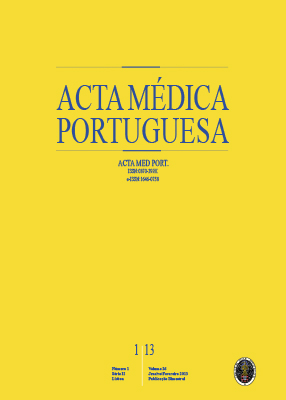Muscle Tissue Changes with Aging
DOI:
https://doi.org/10.20344/amp.542Abstract
Sarcopenia is characterized by a progressive generalized decrease of skeletal muscle mass, strength and function with aging. Recently, the genetic determination has been associated with muscle mass and muscle strength in elderly. These two phenotypes of risk are the most commonly recognized and studied for sarcopenia, with heritability ranging from 30 to 85% for muscle strength and 45-90% for muscle mass. It is well known that the development and maintenance of muscle mass in early adulthood reduces the risk of developing sarcopenia and leads to a healthy aging. For that reason it seems important to identify which genetic factors interact with aging and in particular with the musculoskeletal response to exercise in such individuals. This review is designed to summarize the most important and representative studies about the possible association between certain genetic polymorphisms and muscle phenotypes in older populations. Also we will focuses on nutrition and some concerns associated with aging, including the role that exercise can have on reducing the negative effects of this phenomenon. Some results are inconsistent between studies and more replication studies underlying sarcopenia are needed, with larger samples and with different life cycles, particularly in the type and level of physical activity throughout life. In future we believe that further progress in understanding the genetic etiology and the metabolic pathways will provide valuable information on important biological mechanisms underlying the muscle physiology. This will enable better recognition of individuals at higher risk and the ability to more adequately address this debilitating condition.Downloads
Published
How to Cite
Issue
Section
License
All the articles published in the AMP are open access and comply with the requirements of funding agencies or academic institutions. The AMP is governed by the terms of the Creative Commons ‘Attribution – Non-Commercial Use - (CC-BY-NC)’ license, regarding the use by third parties.
It is the author’s responsibility to obtain approval for the reproduction of figures, tables, etc. from other publications.
Upon acceptance of an article for publication, the authors will be asked to complete the ICMJE “Copyright Liability and Copyright Sharing Statement “(http://www.actamedicaportuguesa.com/info/AMP-NormasPublicacao.pdf) and the “Declaration of Potential Conflicts of Interest” (http:// www.icmje.org/conflicts-of-interest). An e-mail will be sent to the corresponding author to acknowledge receipt of the manuscript.
After publication, the authors are authorised to make their articles available in repositories of their institutions of origin, as long as they always mention where they were published and according to the Creative Commons license.









